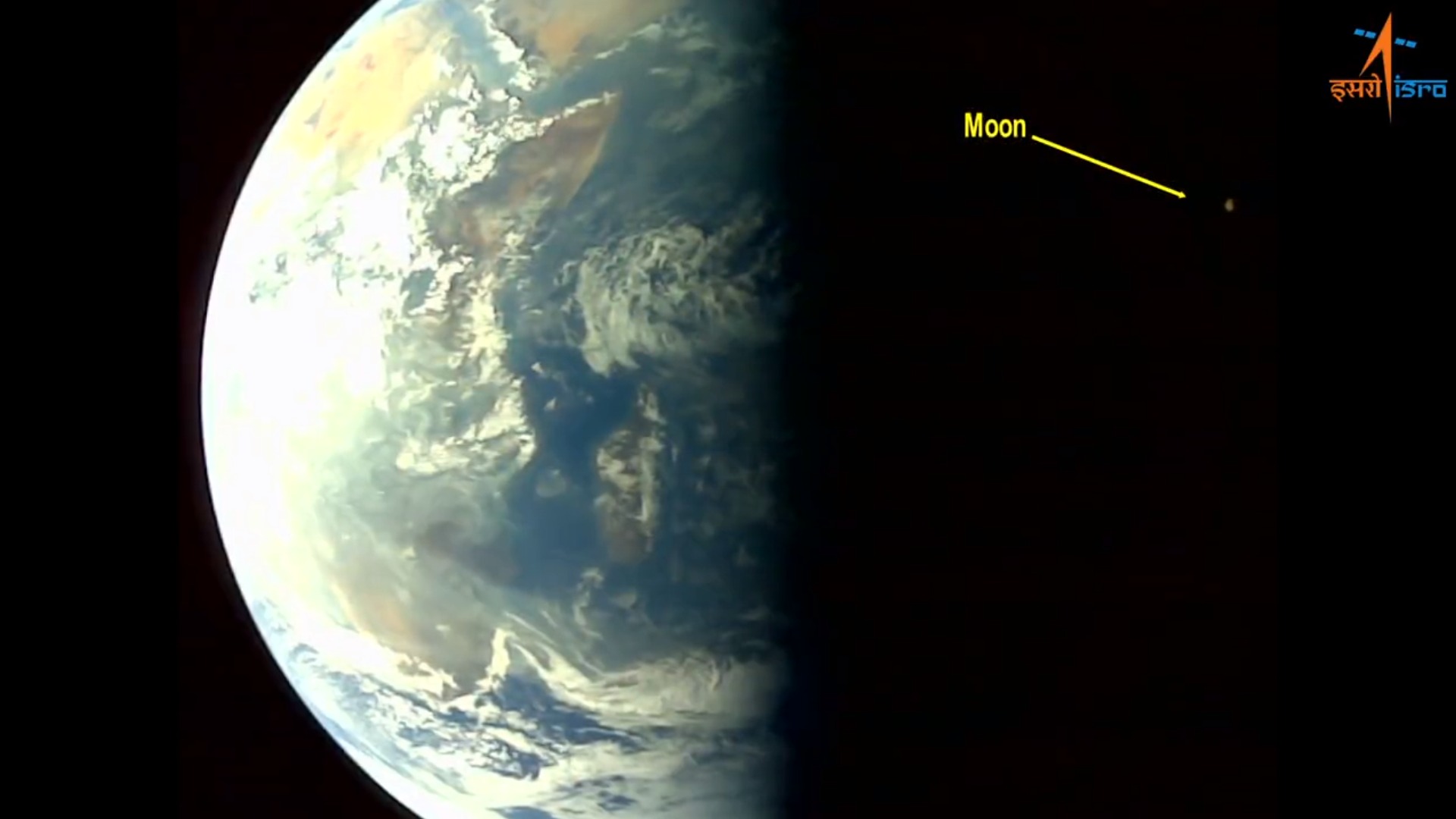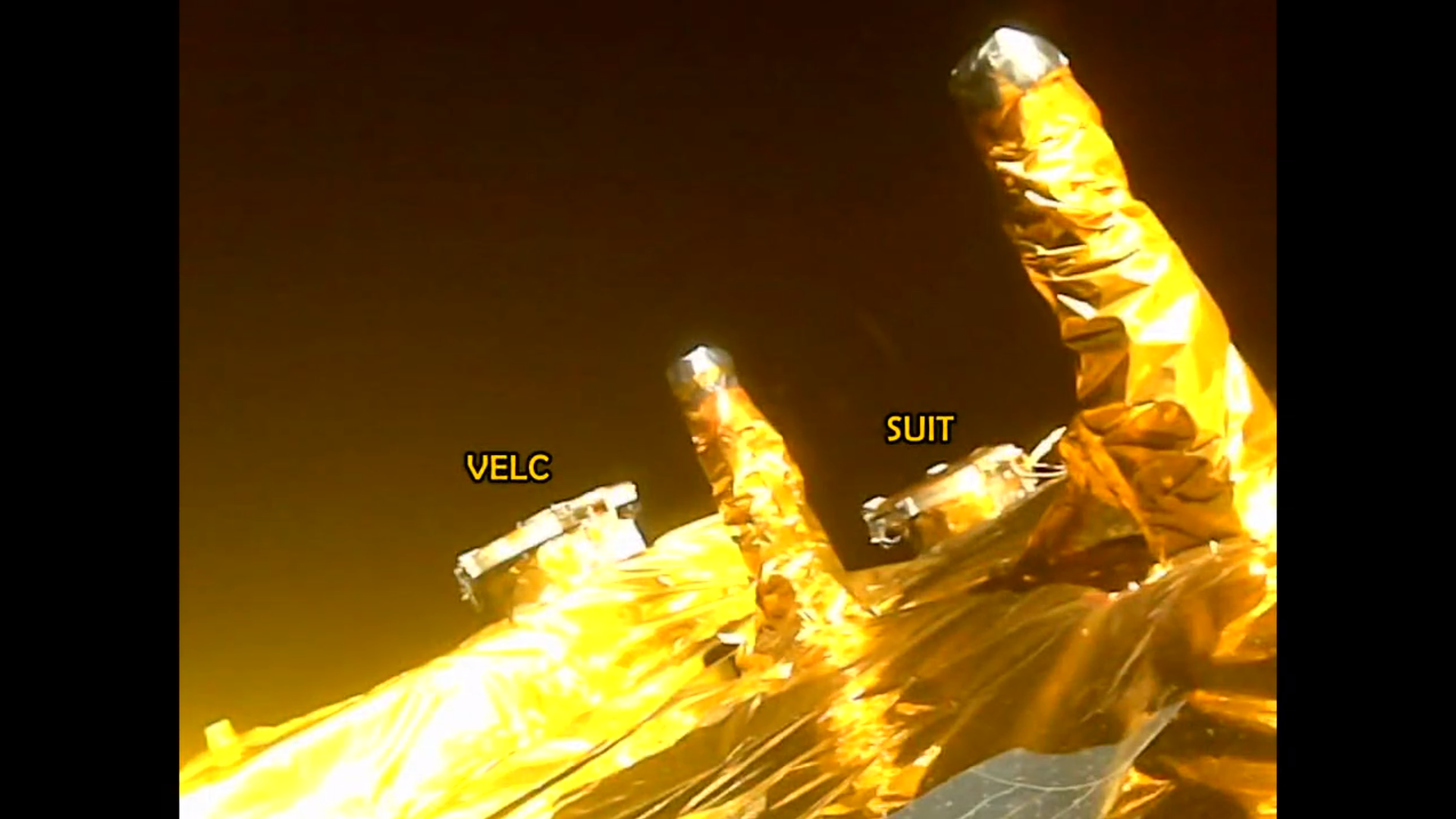India's Aditya-L1 solar probe takes an epic selfie with Earth and moon (photos, video)
Hello, spacecraft! Hello, Earth and moon!
India's first-ever solar probe just beamed some striking imagery home to Earth.
Aditya-L1, the new mission from the Indian Space Research Organisation (ISRO), snapped a photo of itself in space, as well as shots of Earth and the moon. ISRO combined the footage into a video, which the agency shared on X (formerly Twitter) on Thursday (Sept. 7).
Related: India launches Aditya-L1, its 1st-ever sun probe

Aditya-L1 launched on Sept. 2. It's performing checkouts in low Earth orbit right now before heading toward its long-term destination to study the sun. ("Aditya" translates to "sun" in Sanskrit.)
In about four months, the probe will arrive at Earth-sun Lagrange Point 1 (L1), a gravitationally stable spot about 1 million miles (1.5 million kilometers) from our planet in the direction of the sun.
"A satellite placed in the halo orbit around the L1 point has the major advantage of continuously viewing the sun without any occultation/eclipses," ISRO officials wrote in an Aditya-L1 mission description. "This will provide a greater advantage of observing the solar activities and its effect on space weather in real time."

Aditya-L1 Mission:👀Onlooker!Aditya-L1, destined for the Sun-Earth L1 point, takes a selfie and images of the Earth and the Moon.#AdityaL1 pic.twitter.com/54KxrfYSwySeptember 7, 2023
Aditya-L1 will study the sun to learn about a few things: solar activity, such as solar flares and coronal mass ejections of charged particles that can spark beautiful auroras on Earth while causing a risk to infrastructure like satellites.
Get the Space.com Newsletter
Breaking space news, the latest updates on rocket launches, skywatching events and more!
Additionally, it will examine the "coronal heating problem." That refers to the sun's mysteriously ultra-hot outer atmosphere, which reaches temperatures around 2 million degrees Fahrenheit (1.1 million degrees Celsius), according to NASA. Other layers of the sun are not nearly so hot, presenting a mystery for scientists as to how this happens.
Join our Space Forums to keep talking space on the latest missions, night sky and more! And if you have a news tip, correction or comment, let us know at: community@space.com.

Elizabeth Howell (she/her), Ph.D., was a staff writer in the spaceflight channel between 2022 and 2024 specializing in Canadian space news. She was contributing writer for Space.com for 10 years from 2012 to 2024. Elizabeth's reporting includes multiple exclusives with the White House, leading world coverage about a lost-and-found space tomato on the International Space Station, witnessing five human spaceflight launches on two continents, flying parabolic, working inside a spacesuit, and participating in a simulated Mars mission. Her latest book, "Why Am I Taller?" (ECW Press, 2022) is co-written with astronaut Dave Williams.









